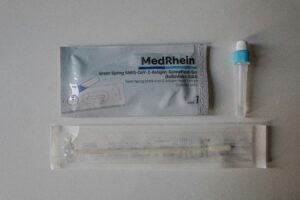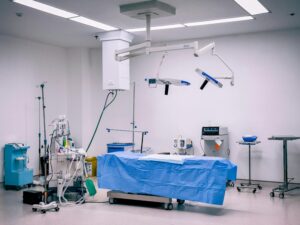End-to-end traceability is a comprehensive system of identification for medical devices throughout the supply chain, enabling faster recall responses, operational continuity, and post-market compliance. It is based on an accurate and individual identification of units, from the manufacturing process through delivery to the final consumer.
Exact and detailed individual identification of defective units helps minimize recalls, leading to reduced operational and costs. At the same time, it helps ensure greater patiente safety and adherence to existing regulations. Although all actors in the health medical device production and repartition chain have a role to play in its success, qualified and experienced builders are the foundation of it.
Why Traceability is Critical for Recall Management
Comprehensive traceability is fundamental in Recall Management for medical device recalls because it implies the ability to track medical devices through the manufacturing process to the final consumer. This includes, but is not limited to, raw materials, assembly, in-line testing, packaging, labelling, shipping, and use.
This process involves identifying full lots and individual units using the Unique Device Identification (UDI). As a requirement by the Food and Drug Administration (FDA), the UDI is a tracking system that consists of 5 elements:
- Manufacturing date
- Expiration date
- Lot number
- Serial number
- Device identifier
Together, these data constitute the individual and exclusive identification of every medical device produced, put up for sale, or delivered to the final customer.
For this reason, traceability enables speedy reaction to medical device recalls, allowing for the identification, location, and recovery of defective units more quickly and accurately. Among its numerous benefits are reduced costs, increased patient safety and adherence to mandatory regulations.
Elements of a Strong Recall-Ready Process
A strong Recall-Ready process for medical device recalls requires at least, but it’s not limited to, three main elements for it to be comprehensive:
- Readiness. Readiness implies well-established recall procedures, trained staff, top-level compliance with regulations, adequate communication, and comprehensive reporting and analysis.
- Discovery. Root Cause Analysis (RCA), driven by detailed traceability throughout the entire production and distribution chain, also known as end-to-end traceability, facilitates an efficient and early detection process.
- Action. Refers to the response after the research stage has been completed. Not only the recovery of the device, but also the post-recovery stages, such as follow-up assessments.
During the process of strong medical device recalls, other elements are also present at various stages, such as the design of recall plans, continued training, and trial audits.
Last but not least, ISO 13485 establishes criteria for post-market safety, including Post-Market Surveillance and Vigilance. These emerge to ensure an effective closure of the recall cycle, which includes learning and prevention.
Post-Market Expectations under ISO 13485
The ISO 13485 norm for medical device recalls establishes the need for a Post Market Surveillance (PMS). This is a thorough system of vigilance to guarantee device safety. The responsibility of enforcing it primarily lies with manufacturers, and its purpose is to demonstrate that healthcare equipment complies with the Medical Device Regulations (MDR).
PMS strategies must always contain four fundamental pillars of action, which are not an exhaustive list of adequate measures but rather a road map to them:
- Handle and report complaints. This includes obtaining complaints, systematizing them, reviewing them, responding to them and ultimately reporting them to the corresponding regulatory entity.
- Monitor and communicate adverse events. There must be a systematic lookout for side effects or unintended consequences that may lead to medical device recalls. A proper research about them must take place to be reported as well.
- Analyze trends and detect signals. Analyzing surveillance information to detect trends and signals of defective functioning or adverse effects is crucial for obtaining valuable and helpful insights.
- Take Corrective and Preventive Actions (CAPA). This is the ultimate purpose of the entire chain, which must lead to making the necessary corrections and preventing further issues based on the gathered information.
The post-market action is another link in the overall traceability chain, ensuring end-to-end traceability. Detecting problems, learning from them, and implementing preventive measures should be the ultimate purpose of surveillance.
Using Traceability for Fast Root Cause Analysis
Fast Root Cause Analysis for medical device recalls is highly benefited by using traceability because it allows for broader and faster research and action, by clearly identifying what, where, and when of a problem, as well as its possible causes, work on a solution can be done faster and more effectively.
Furthermore, robust data-based research can lead to better decision-making by enhancing accuracy and reducing the margin of error. For health-related equipment producers, this results in the efficient use of resources and improved satisfaction of patients and customers alike.
Most importantly, post-market safety is enhanced, which contributes to overall satisfaction with the ISO 13485 norm for medical devices. Adherence on the part of manufacturers not only reduces the occurrence of medical device recalls, but also enhances readiness for ISO audit processes.
Whether as a healthcare institution or a final consumer, relying on proactively compliant manufacturers is one step ahead in confidence and safety. Looking out for the appropriate certification, but also experience and quality are key factors in achieving ultimate consumer satisfaction and positive results.
RexMed’s Approach to Audit-Ready Traceability
Audit-ready traceability constitutes a key pillar of RexMed’s adherence to ISO 13485. Constant quality training, strict adherence to best practices, and internal and simulation audits contribute to making this happen by fostering a robust product history tracking system.
All participants in the healthcare providing ecosystem have a fundamental role to play in the ultimate safety of patients and consumers. However, knowing your manufacturer and relying on top-quality standards is the best way to ensure a successful medical experience.






